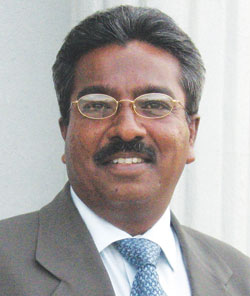

“In recent years, HMIS has evolved both in terms of features, and extensibility. From technology perspective the shift is from client server architecture to web based solutions,” says Suchet Singh, CEO, Srishti Software
Issue Date: June 4th, 2012
Publication: eHealth
 Current HMIS allows complete integration with handheld devices, such as PDAs and smart phones, so that it can be carried anywhere anytime helping consultants/ doctors to review and send their suggestions on the fly. HMIS has also matured to handle multiple data source such as bedside monitors, GPS systems, bar code readers, RFIDs and iris scanners. Finally, HMIS of today conforms to most robust healthcare standards ensuring better patient care.
Current HMIS allows complete integration with handheld devices, such as PDAs and smart phones, so that it can be carried anywhere anytime helping consultants/ doctors to review and send their suggestions on the fly. HMIS has also matured to handle multiple data source such as bedside monitors, GPS systems, bar code readers, RFIDs and iris scanners. Finally, HMIS of today conforms to most robust healthcare standards ensuring better patient care.
The healthcare solution suite, PARAS is an integrative platform that has helped hospitals manage their costs at activity level and substantially improve their revenues. It allows high interoperability of entire spectrum of healthcare technologies enabling client hospitals to deliver best-in class service. Most unique feature of PARAS is the activity based costing approach which has allowed client hospitals to price their services right. PARAS conforms to all global and industry standards including HL7, HIPAA, NABH, JCI, ITIH, etc.
India is said to have about 100-120 super specialty healthcare providers. Analysts predict the number to reach 200 in the next five years. Typically a super specialty hospital has an IT budget of anywhere between INR 50,00,000 to INR 1,50,00,000. If we consider INR 80,00,000 as an average IT budget for these hospitals, 100 hospitals would make the market worth INR 8,00,00,0000 currently. The cost of installation depends upon the modules chosen.
Post PARAS HMIS implementation, client hospitals noticed increased efficiency in the following areas- improved customer service, improved employee productivity, cost savings, stationary cost and revenue leakage.
Majority of work force is not IT trained and hence IT adoption may be slow. We have overcome this barrier by training hospital staff to ensure faster adoption and high usage. Most branded IT products, fail to deliver in a typical Indian scenario on the grounds of relevance. Srishti, being an Indian company has known market more closely and hence, PARAS is built to deliver in an Indian hospital ecosystem. With IT sector developing fast, hospitals fear technology obsolescence. We have offered a solution to this problem by making PARAS adaptive and modular, which allows hospitals to choose a customized solution, based on their requirement to enhance clinical care without the fear of technology obsolescence and functional outgrowth.
Conforming to healthcare standard will enable hospitals to provide better quality of patient care. Medication error can be greatly reduced with the usage of various scenarios of drug interaction alerts. The usage of proper appointment scheduling feature of an HMIS results in significant reduction in patient waiting time. This results in greater satisfaction amongst the patients. An HMIS with an integrated EMR ensures continuity of care record, which can be made available at the time of clinical encounter enabling consultants and physicians to provide right treatment to the patient.
Average length of patient can be greatly reduced by having a robust ADT feature of HMIS helping patient to discharge without having to wait unnecessarily. Drug interaction alerts can be very useful, as while administering drug to the patient the caregivers can avoid all kinds of human-error related mistakes. HMIS compliant with diseases and procedures code can help doctors avoid entering wrong diagnosis in the EMR.


